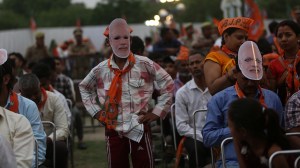- India
- International
Overflowing drain, no housing: Delhi, Faridabad slum residents struggle this monsoon
Residents are awaiting their relocation to flats in Dwarka, which was supposed to take place after 289 of the 400-odd families were found to be eligible following a survey in 2018. However, this has been put on hold.
 Every time the settlement floods, residents also get their electricity connection suspended to prevent any mishaps. (Express Photo by Sukrita Baruah)
Every time the settlement floods, residents also get their electricity connection suspended to prevent any mishaps. (Express Photo by Sukrita Baruah)For residents of Arjun Das Camp slum, heavy rain means water inside their homes and hours without electricity. But the situation has never been worse than this year.
Located in South Delhi’s Kidwai Nagar, the settlement is among several slums located on a low-lying strip along the Kushak Nala. With heavy rainfall, the drain that runs beside their settlement overflows and the water seeps into their homes. In this exceptionally rainy year, with seven heavy rain spells so far, this has been frequent and severe.
Every time the settlement floods, residents also get their electricity connection suspended to prevent any mishaps.
Rajkumar, a 53-year-old resident, said, “Because our basti is low, water from the road and nearby colonies also flows down to the drain and enters our houses. To avoid any tragedy, we ask for our electricity supply to be snapped when this happens. On Saturday, we saw really bad flooding… the water was coming up to our knees inside our houses by afternoon. Only once the water level reduced, around 9 pm, did we get our electricity back…The last time it rained like this earlier this month, people’s ration, clothes, everything got wet and damaged.”
The only way in and out of the settlement is a narrow path over the drain. This is inaccessible once the drain overflows, meaning that residents’ movements also get restricted.

Residents are awaiting their relocation to flats in Dwarka, which was supposed to take place after 289 of the 400-odd families were found to be eligible following a survey in 2018. However, this has been put on hold.
Meanwhile, at the demolished Khori Gaon, residents who are now living over the rubble of their razed homes are battling the monsoon from their makeshift shelters made of tarpaulin and tin sheets. The Municipal Corporation of Faridabad has stated that it is in the process of getting its rehabilitation flats ready, which it said will take six months.
As the storm raged on Saturday night, Hirdaya Devi (35) and her family huddled with their neighbours under a protective structure that they tried to build with tarpaulin sheets and bits from demolished houses.
“We’ve just been waiting out the rains together. Once it stops, we use a broom to remove excess water from our living area. The main problem is that we can’t cook while it rains, so on Saturday, I cooked once when the rain stopped in the afternoon,” she said.
Another resident, Mano Devi (37), said her family decided to rent a small room nearby for Rs 5,000 a month to store their valuable belongings like a refrigerator and cooler. The room is too small to accommodate them, so they continue to live at the site on cots under a makeshift structure.
With a lack of drainage and congested living conditions, this monsoon has been challenging for residents of slums across the city. At Pul Mithai slum in Old Delhi as well, lack of drainage means that rainwater has accumulated next to lower-lying houses, impacting movement and accessibility.
Apr 24: Latest News
- 01
- 02
- 03
- 04
- 05









































